Many tourists to famous tourist areas in Taiwan are impressed by the country's mountains and forests, lakes and beaches. But public toilets next to these delightful sightseeing spots are all too often unremarkable, or when they are remarkable, it's for their puddled floors and stinking stools.
At the three-day annual World Toilet Summit last week, hosted for the first time by the Taiwan Toilet Association (
"If the government wants to double the number of tourists to Taiwan, public toilets are the key, otherwise we'll see the number not doubled but halved," said Cheng Cheng-li (
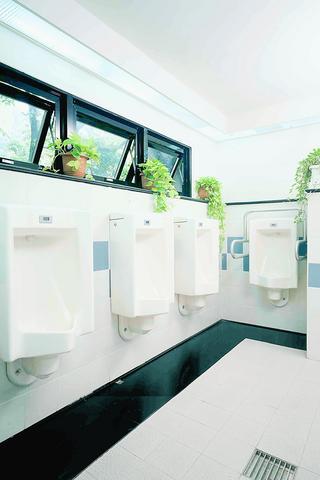
PHOTO COURTESY OF YOU MING-GUO
Domestic travel reportage in the local media almost never mentioned toilets until recently, when Liao Wei-li's (
"Most people do not like to talk about toilets. Traditionally, it's not a decent subject, but we have to talk about it to know how to improve toilet designs," Cheng said -- and to improve toilets is first of all to make them clean.
"In tourist areas, public toilets leave a significant impression on tourists. However, the existing toilets are mostly not clean and odorless. Tourists go there only when they have no choice and rush out as quickly as possible. The most important thing at present is to have clean toilets."
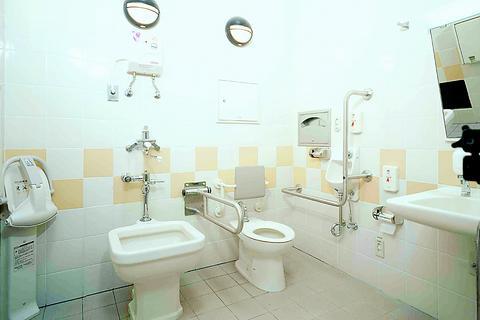
The exterior of the toilets comes next. "The success of a toilet design does not rely on its appearance. When tourists actually use the facilities, they don't look at how pretty the exterior is. Their concern is more about whether it's bright enough or does it look safe," Cheng said.
Cheng cited Singapore's "Happy Toilet Program," a rating system imposed on all public toilets, to improve them. Taipei City Government currently runs a similar rating system, but its enforcement has not been tough enough.
"Sometimes, after a toilet wins the `smiling face mark' ... for its cleanliness, maintenance lapses after the government officials leave," Cheng said.
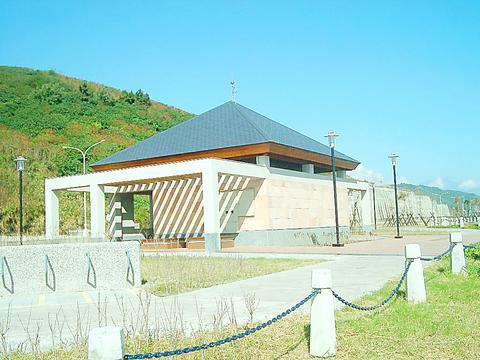
Wu, president of the Taiwan Toilet Association, made slight changes in regular toilets settings with his designs for three restroom buildings in Yangminshan Park to make maintenance easier. In the men's room, a row of windows is placed at eye level above the stools.
"Out of the window, you can see trees and flowers. People are naturally drawn to things outside the window, so that the urinating men will stand closer to the stool in order to look out at the trees. In doing so, they unknowingly come closer to the stool and therefore their urine does not drip outside. This then keeps the floor dry and easier to clean," Wu said.
The three newly-finished toilets are known for being "human friendly." They are fitted out with a variety of accessories for the family and handicapped users. Such toilets that everyone can use with ease are necessary for tourist spots, Wu said.
"If you really want to attract people to tourist areas, you need designs for the handicapped, so that they can enjoy outdoor activities like everyone else. Handicapped people are often discouraged from going sightseeing by the troublesome business of going to toilets."
Through a Japanese architect friend, who lost both legs in a car accident, Wu got to know the specific needs of wheelchair-bound people and used that knowledge in his designs.
"Toilets for wheelchair users are equipped with a pair of bars which users can hold onto when they remove their pants and sit on the stool, but the bars are often set either too close or too far apart, so handicapped users have to make a lot of effort to undress," Wu said. In order to solve the problem, Wu installed bars which are 70cm apart in the 2.2m by 2.2m "multifunctional toilets" on Yangmingshan. The wash stand is within arm's reach from the stool on one side. "Wheelchair users often have constipation because they sit all the time, so they have to use an enema, or even their fingers. The wash stand have to be within easy reach so they can wash their hands right after the procedure," Wu explained.
On the other side stands a disposal basin with a warm water outlet, for cleaning an artificial anus, or bladder, and the accompanying sanitary bags.
"The dining habits of people in Taiwan are not very healthy, so a large number of people developed illnesses and have an artificial anus. They are forced to stay home because they have to take care of the device from time to time. If the toilets allow them to perform these routines easily, they would be free to come outside to enjoy nature like healthy people."
You Ming Guo (
"Toilets in tourist areas can be more than toilets. They can be another idyllic spot where tourists rest their feet. At present, these toilets are stinky and dirty. Tourists want to stay as far away from them as possible," You said.
To change people's attitudes, You designed large window for ventilation and lighting, to get rid of odors. He also moved the wash stands, usually placed at the entrance, on the outside to prevent people crossing the entrance from stepping on a wet floor.
"Tourists want to use toilets which are as clean as those in their own house," You said.
You's design in Yanliao connects the toilet proper to a wooden arbor, where a bird's eye view of the surrounding hills is clear, to draw people closer to the its surrounding.
As the general consultant on scenery for the Interior Ministry's Construction and Planning Agency (
He suggested localizing tourist-area toilets.
"If the toilets are in Hualien, they can use the famous local marbles, if they are in a forest, they can use local timber. But 99 percent of the toilets look out of place with nature."
You attributed the uniformly staid toilet designs to the fact that architects do not gain as much recognition from designing toilets as from designing, say, shopping malls. Few architects in Taiwan, therefore, specialize in toilets.
To prepare for the 2008 Doubling of Tourists Arrival Plan, You agreed with Cheng that tourist-area toilets have to be clean first.
"They don't have to be like five-star hotels, they just need to be clean. They are part of the first impressions that tourists have of this country. They could even decide whether tourists consider Taiwan a civilized society," You said.
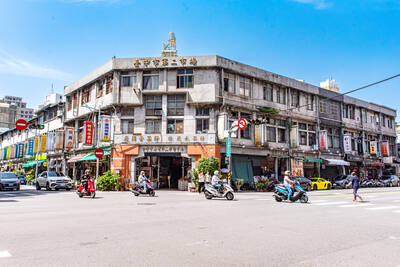
Wooden houses wedged between concrete, crumbling brick facades with roofs gaping to the sky, and tiled art deco buildings down narrow alleyways: Taichung Central District’s (中區) aging architecture reveals both the allure and reality of the old downtown. From Indigenous settlement to capital under Qing Dynasty rule through to Japanese colonization, Taichung’s Central District holds a long and layered history. The bygone beauty of its streets once earned it the nickname “Little Kyoto.” Since the late eighties, however, the shifting of economic and government centers westward signaled a gradual decline in the area’s evolving fortunes. With the regeneration of the once
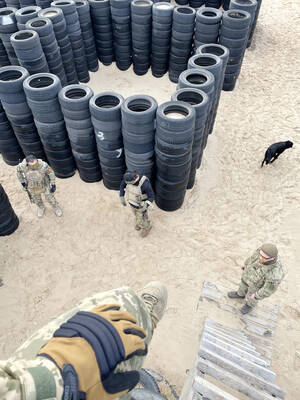
Even by the standards of Ukraine’s International Legion, which comprises volunteers from over 55 countries, Han has an unusual backstory. Born in Taichung, he grew up in Costa Rica — then one of Taiwan’s diplomatic allies — where a relative worked for the embassy. After attending an American international high school in San Jose, Costa Rica’s capital, Han — who prefers to use only his given name for OPSEC (operations security) reasons — moved to the US in his teens. He attended Penn State University before returning to Taiwan to work in the semiconductor industry in Kaohsiung, where he

On May 2, Chinese Nationalist Party (KMT) Chairman Eric Chu (朱立倫), at a meeting in support of Taipei city councilors at party headquarters, compared President William Lai (賴清德) to Hitler. Chu claimed that unlike any other democracy worldwide in history, no other leader was rooting out opposing parties like Lai and the Democratic Progressive Party (DPP). That his statements are wildly inaccurate was not the point. It was a rallying cry, not a history lesson. This was intentional to provoke the international diplomatic community into a response, which was promptly provided. Both the German and Israeli offices issued statements on Facebook
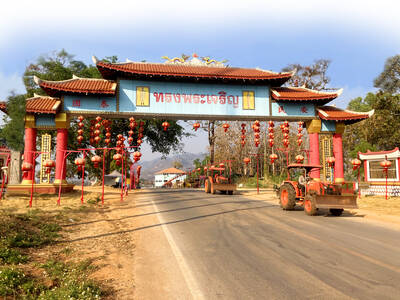
Perched on Thailand’s border with Myanmar, Arunothai is a dusty crossroads town, a nowheresville that could be the setting of some Southeast Asian spaghetti Western. Its main street is the final, dead-end section of the two-lane highway from Chiang Mai, Thailand’s second largest city 120kms south, and the heart of the kingdom’s mountainous north. At the town boundary, a Chinese-style arch capped with dragons also bears Thai script declaring fealty to Bangkok’s royal family: “Long live the King!” Further on, Chinese lanterns line the main street, and on the hillsides, courtyard homes sit among warrens of narrow, winding alleyways and